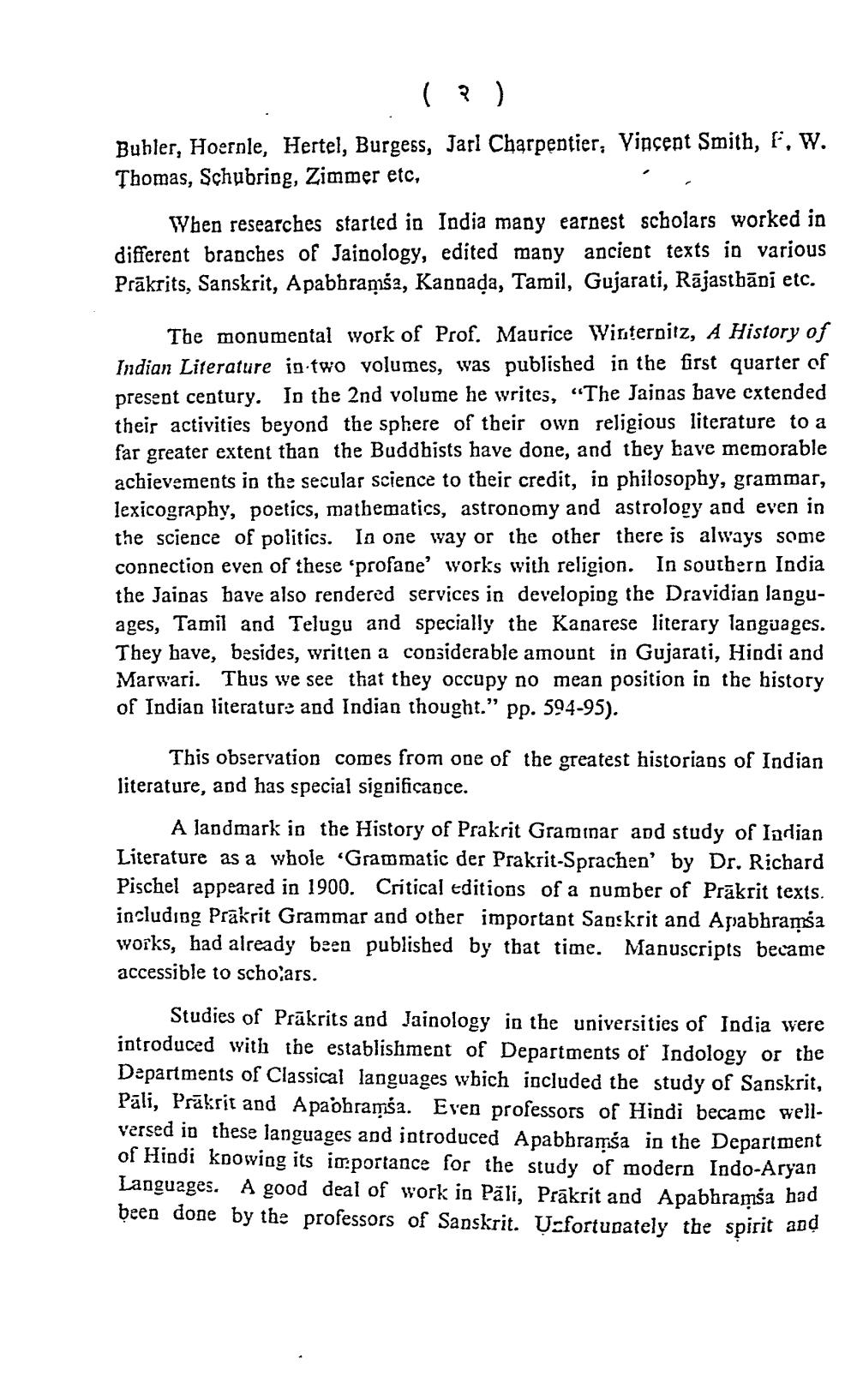________________
( ૨ )
Buhler, Hoernle, Hertel, Burgess, Jarl Charpentier, Vincent Smith, F., W. Thomas, Schubring, Zimmer etc,
When researches started in India many earnest scholars worked in different branches of Jainology, edited many ancient texts in various Prakrits, Sanskrit, Apabhramsa, Kannada, Tamil, Gujarati, Rajasthani etc.
The monumental work of Prof. Maurice Winternitz, A History of Indian Literature in two volumes, was published in the first quarter of present century. In the 2nd volume he writes, "The Jainas bave extended their activities beyond the sphere of their own religious literature to a far greater extent than the Buddhists have done, and they have memorable achievements in the secular science to their credit, in philosophy, grammar, lexicography, poetics, mathematics, astronomy and astrology and even in the science of politics. In one way or the other there is always some connection even of these 'profane' works with religion. In southern India the Jainas bave also rendered services in developing the Dravidian languages, Tamil and Telugu and specially the Kanarese literary languages. They have, besides, written a considerable amount in Gujarati, Hindi and Marwari. Thus we see that they occupy no mean position in the history of Indian literature and Indian thought." pp. 594-95).
This observation comes from one of the greatest historians of Indian literature, and has special significance.
A landmark in the History of Prakrit Grammar and study of Indian Literature as a whole 'Grammatic der Prakrit-Sprachen' by Dr. Richard Pischel appeared in 1900. Critical editions of a number of Prakrit texts. including Prakrit Grammar and other important Sanskrit and Apabhramsa works, had already been published by that time. Manuscripts became accessible to scholars.
Studies of Prakrits and Jainology in the universities of India were introduced with the establishment of Departments of Indology or the Departments of Classical languages which included the study of Sanskrit, Pāli, Prakrit and Apaohramsa. Even professors of Hindi became wellversed in these languages and introduced Apabhramša in the Department of Hindi knowing its importance for the study of modern Indo-Aryan Languages. A good deal of work in Päli, Prakrit and Apabhramsa had been done by the professors of Sanskrit. Unfortunately the spirit and




